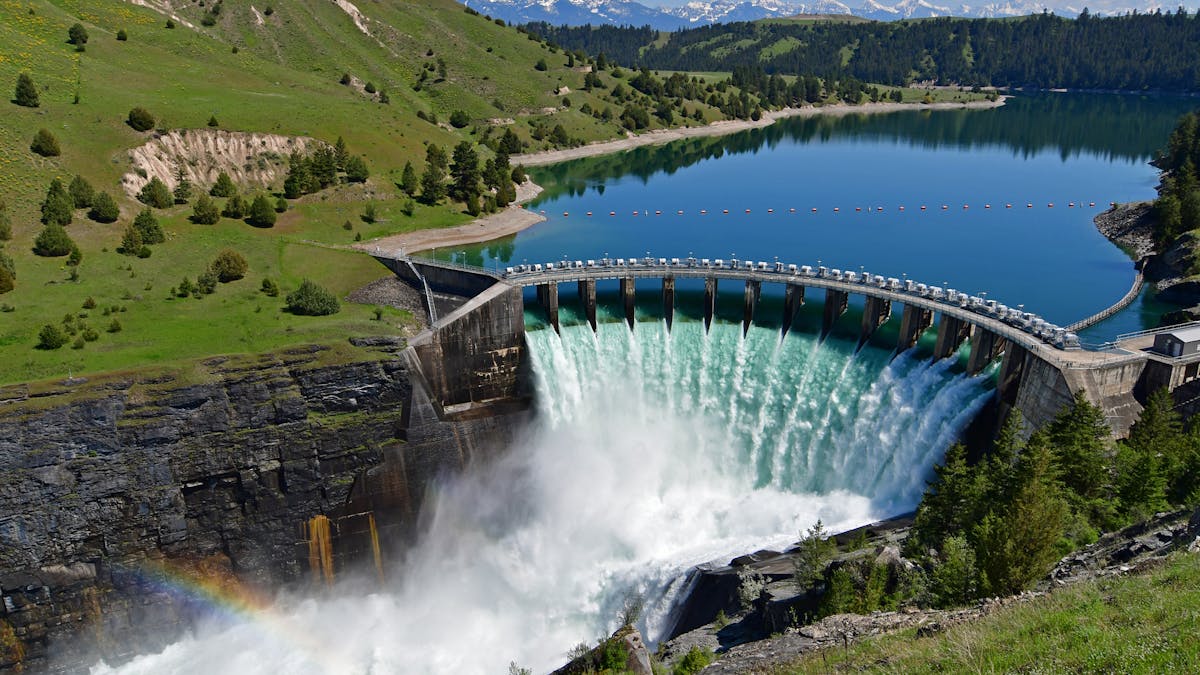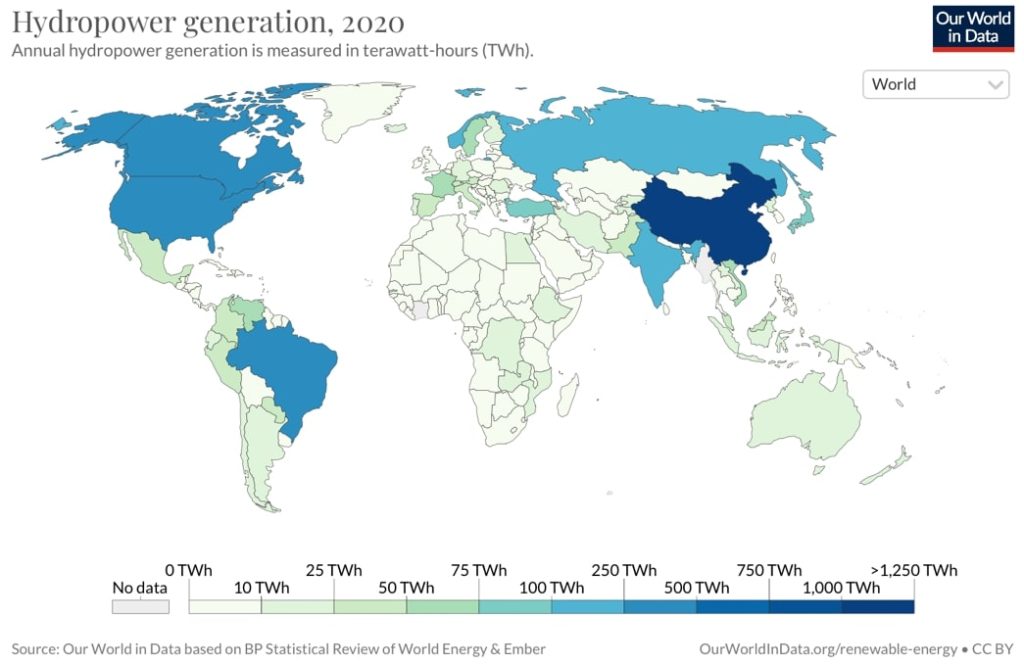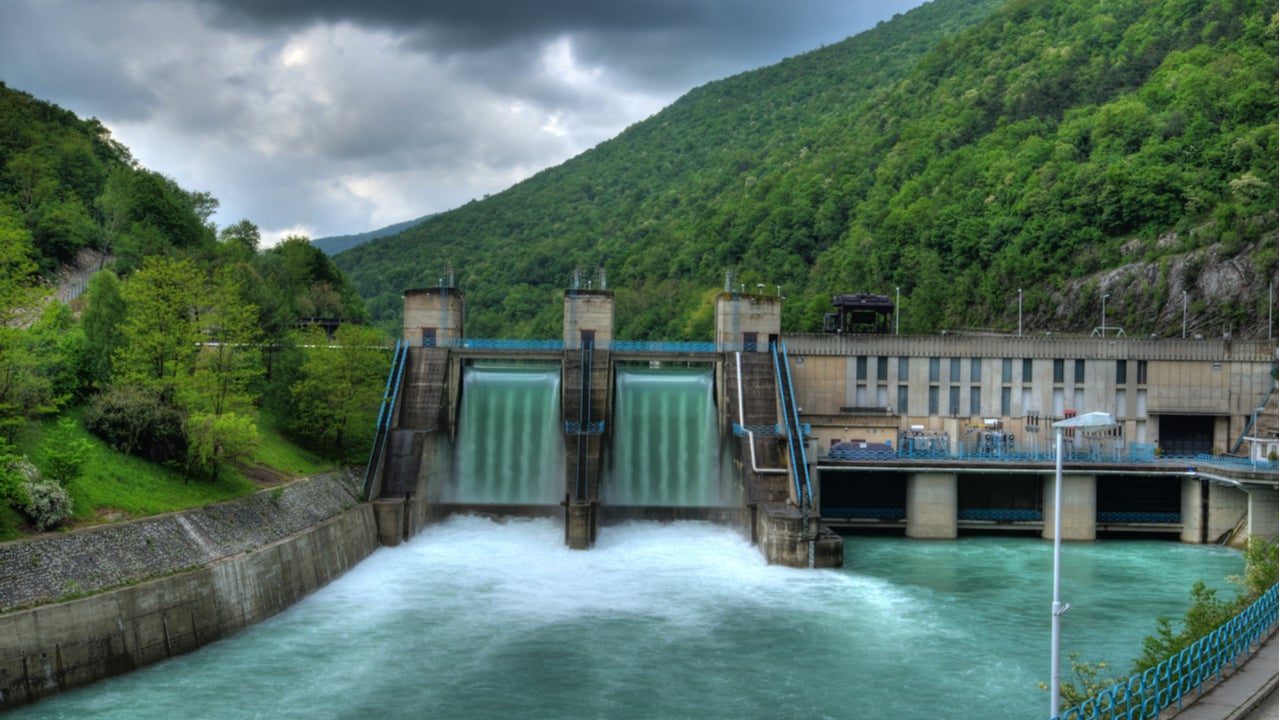In recent times, the need for sustainable, reliable, and eco-friendly energy sources has gained immense importance worldwide due to the escalating threat of climate change and the soaring demand for energy to sustain economic growth.
This article delves into the merits and limitations of hydroelectricity, as well as the challenges and opportunities it presents for its continued expansion as a vital constituent of the global energy mix.
What is Hydroelectric Power?

Hydroelectric power, a renewable energy source, harnesses the potential energy of falling or flowing water to generate electricity.
With over a century of use, the technology has become one of the most widely adopted sources of renewable energy.
At its core, hydroelectric power operates on the principle that gravity-driven water movement can be utilized to turn turbines, thereby producing electricity.
To create reservoirs of water for this purpose, hydroelectric power plants employ dams and release the stored water in a controlled manner through turbines.
The generation process begins with water containment in a reservoir behind a dam. Subsequently, the water is released via turbines connected to a generator that produces electricity.
As the water flows through the turbines, it imparts a rotational force, ultimately resulting in electricity production.
When Was The First Hydroelectric Dam Created?
The world's first hydroelectric dam was built at Cragside, Northumberland, in the United Kingdom in 1878 by William Armstrong, a Victorian inventor and industrialist.
The dam was constructed to power a single arc lamp in Armstrong's country home.
This early hydroelectric plant was not designed to generate electricity on a large scale but rather to demonstrate the feasibility of using hydropower to generate electricity.
However, it paved the way for the development of larger and more sophisticated hydroelectric power plants that could generate electricity on a commercial scale.
Which Countries Use The Most Hydroelectricity?
 China uses the most hydroelectricity, followed by Canada and Brazil.
China uses the most hydroelectricity, followed by Canada and Brazil.
According to the International Energy Agency (IEA), China, on its own, accounted for over a quarter of the world's total hydroelectricity production in 2020.
China has been investing heavily in hydropower development over the past few decades and has built several large hydroelectric dams on its major rivers, including the Three Gorges Dam, which is the largest hydropower project in the world.
In Canada and Brazil, hydroelectricity also plays a significant role in the national energy mix, accounting for a substantial portion of their electricity generation.
Is Hydroelectricity Viable Everywhere?
Hydroelectricity is not viable everywhere due to various geographical and environmental constraints.
To generate hydroelectricity, a significant amount of water flow and elevation drop is required, which means that only locations with access to sufficient water resources and suitable topography are viable for hydropower development.
Additionally, the construction of large hydroelectric dams and reservoirs can have significant environmental impacts, including the displacement of local populations, the alteration of natural ecosystems, and the release of greenhouse gases and other pollutants.
Furthermore, the cost of building and operating a hydroelectric power plant can be relatively high, and there may be regulatory and permitting challenges associated with the development of large-scale hydroelectric projects.
In areas with high seismic activity, dam construction may also pose a risk to public safety.
Despite these limitations, hydroelectricity remains a significant source of clean energy in many parts of our planet, particularly in regions with ample water resources and suitable topography.
However, the viability of hydropower as a source of electricity generation depends on various factors such as local climate, geography, and environmental conditions, and must be evaluated on a case-by-case basis.
Are Hydroelectric Dams Efficient?

Hydroelectric dams are widely regarded as highly efficient, with conversion efficiencies that can typically reach as high as 90 percent.
This means that nearly all of the energy contained in the water flow can be converted into electrical energy.
The remarkable efficiency of hydroelectric dams can be attributed to the direct conversion of kinetic energy from the movement of water into electrical energy, without the requirement of any intervening steps or energy transformations.
Nevertheless, the efficiency of hydroelectric dams can be influenced numerous factors, such as the quality of the equipment utilized in the generation process, the upkeep and maintenance of the plant, and the efficiency of the transmission and distribution network utilized to transport the electricity to consumers.
Additionally, the efficiency of a hydroelectric dam can be impacted by seasonal variations in water flow and weather conditions, which may alter the quantity of available water and the level of energy that can be generated.
Despite these limitations, hydroelectricity continues to be a highly efficient and dependable source of renewable energy.
Final Thoughts
Hydroelectric power is a renewable energy source that has been in use for over one hundred years.
And still today it is widely used due to its reliability, efficiency, and environmental benefits.
While not viable in all locations, hydroelectric dams can generate significant amounts of clean energy by harnessing the kinetic energy of moving water.
Though the efficiency of hydroelectric dams may be influenced by various factors, the conversion efficiencies of these facilities typically range from 80 to 90 percent, making hydroelectricity one of the most efficient and dependable forms of renewable energy available today.
With ongoing technological advancements and increased attention to sustainable energy solutions, the role of hydroelectricity is likely to continue to expand in the global energy mix in the years ahead.